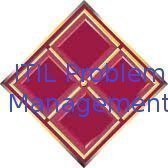ITIL Problem Management
When dealing with Information Technology Infrastructure Library, there are numerous different components. These components, when combined together, make for an excellent response to issues that customers might have with an IT organization. While many of the steps in ITIL rely on helping customers to get issues resolved, problem management is different. Problem management, when implemented correctly, tries to resolve the causes of incidents. By doing this, those in this department are able to reduce the impact of an incident on a business.
What does ITIL Problem Management Do?
The ultimate goal of problem management is to figure out what might be the cause of problems and prevent them from developing. In other words, problem management is the prevention to problems. While there are other departments, such as incident management, that deal with the customers and returning the service to normal, problem management focuses on finding ways to prevent a problem from occurring to begin with. By applying preventative measures, an IT organization can ensure that their products stay complete for longer.
To break up the work, problem management divides things into two categories. The first is the problem which is an unknown cause of incidents. The cause is unknown, but there is an incident that needs to be resolved. Therefore, the problem in this case is what incident and its causes. The second category is the known error. This is a problem that has been diagnosed. Now that the department knows what is causing the problem and what the problem is specifically, they can go in and begin to make changes.
The way the two work is straight forward. The error control process works to diagnose the known errors continuously until they are eliminated. On the other hand, the problem control process is to identify the root cause of the incidents. They also classify problems and record different problems.
Once a problem has been reduced, they create a report that is then sent up to the service management desk as well as the incident desk. This way, when a customer calls, these two communications are able to better handle the problem and guide the customer through a series of steps to get rid of the problem.
For the most part, the ITIL problem management team is behind the scenes. The customers don’t run into them and they don’t communicate with them. But, what they do is find ways to correct problems as well as pinpoint what is causing the problem. By preventing a problem, a customer is better able to use the technology. If, though, a problem is created, the documentation that is sent up to the 1st and 2nd lines of the help desk can be used effectively to help a customer get out of the problem.


Comments - No Responses to “ITIL Problem Management”
Sorry but comments are closed at this time.